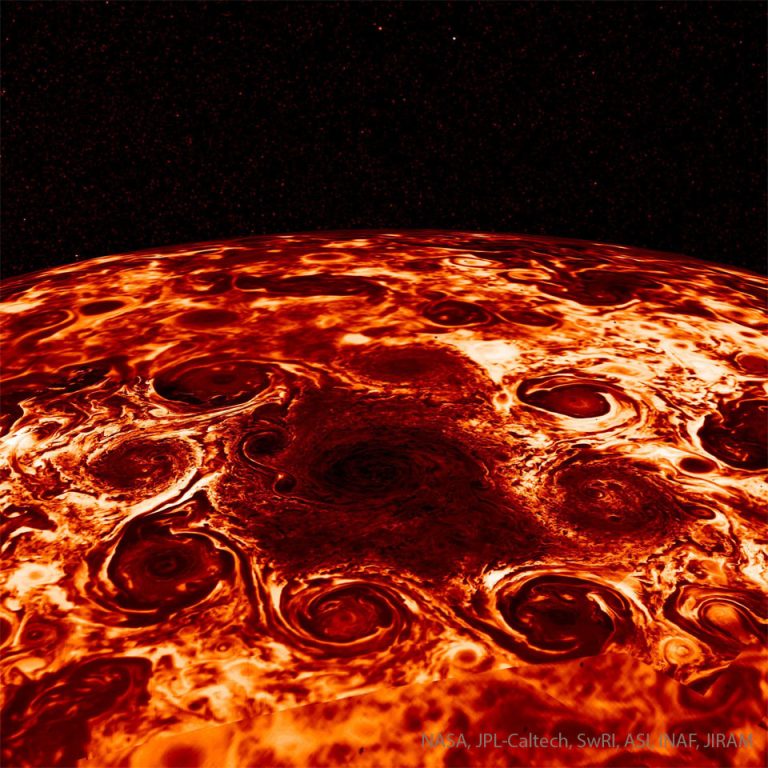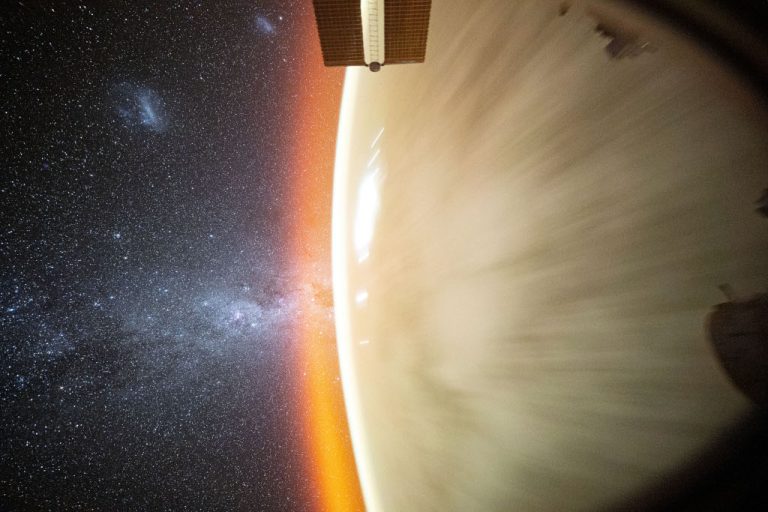2025年2月7日
LEDA 1313424: The Bullseye Galaxy
Image Credit: NASA, ESA, Imad Pasha (Yale), Pieter van Dokkum (Yale)
Explanation: The giant galaxy cataloged as LEDA 1313424 is about two and a half times the size of our own Milky Way. Its remarkable appearance in this recently released Hubble Space Telescope image strongly suggests its nickname “The Bullseye Galaxy”. Known as a collisional ring galaxy it has nine rings confirmed by telescopic observations, rippling from its center like waves from a pebble dropped into a pond. Of course, the pebble dropped into the Bullseye galaxy was a galaxy itself. Telescopic observations identify the blue dwarf galaxy at center-left as the likely collider, passing through the giant galaxy’s center and forming concentric rings in the wake of their gravitational interaction. The Bullseye Galaxy lies some 567 million light-years away toward the constellation Pisces. At that distance, this stunning Hubble image would span about 530,000 light-years.
Tomorrow’s picture: light-weekend
LEDA 1313424: 靶眼星系
影像提供: NASA, ESA, Imad Pasha (Yale), Pieter van Dokkum (Yale)
说明: 庞大、编录号为LEDA 1313424的星系,大小是我们银河系的2倍半左右。在这幅哈勃太空望远镜最近发布的影像里,其吸睛的外观为它博得靶眼星系的称号。望远镜观测证实,这个有九个环的庞大撞环星系,具有类似掷石入塘、源目其星系核的涟漪波。想当然耳,这个掉进靶眼星系的“石子”是另一个星系。望远镜观测进一步辨认出,肇事者可能是影像中左方的蓝色矮星系,而当它穿过靶眼星系的核心时,它们之间的重力交互作用,造就了同心圆状的余波。靶眼星系位于双鱼座方向,约5亿6千7百万光年远之处。以此距离来换算,这张精采的哈伯影像的跨幅约有530,000光年。 (Bullseye Galaxy 靶眼星系)
明日的图片: light-weekend







